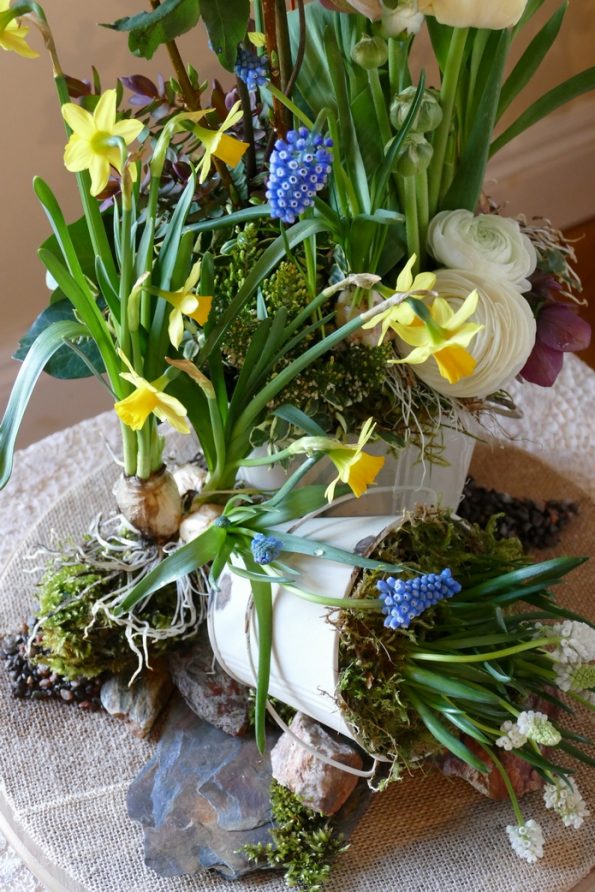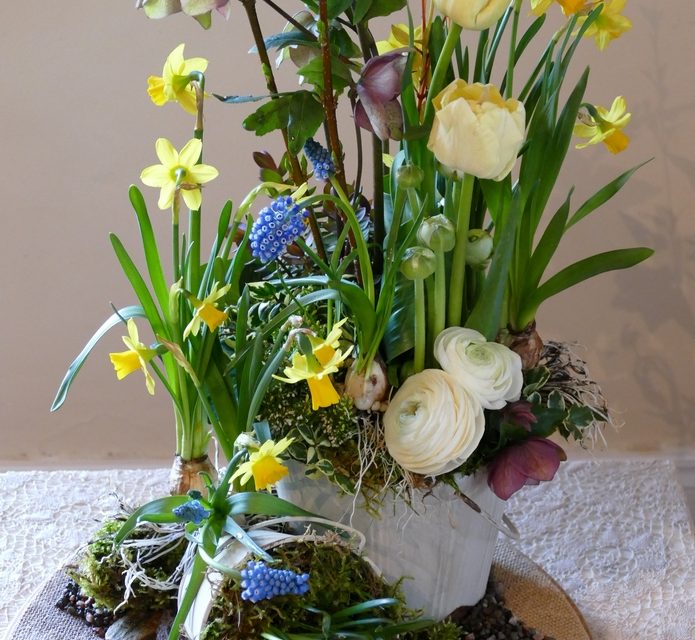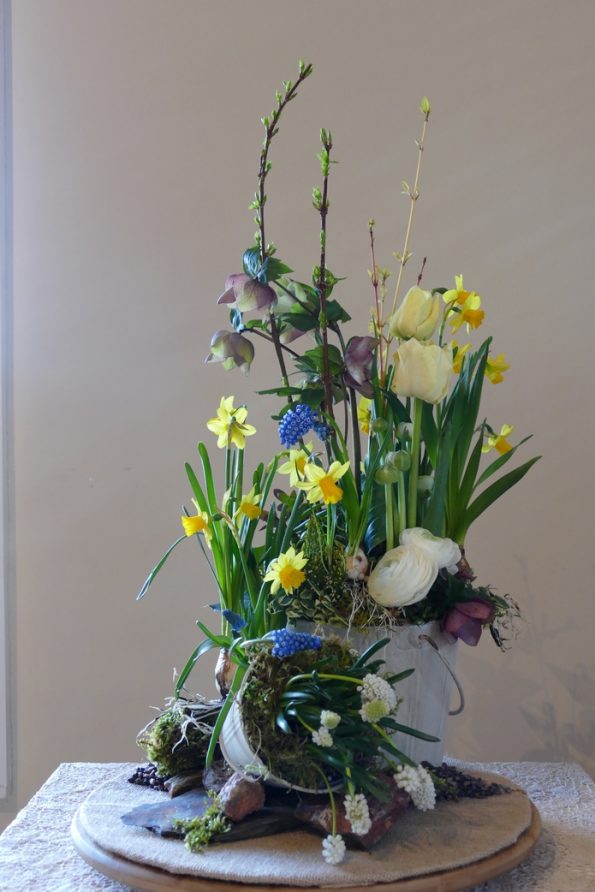“A Vegetative Arrangement, is meant to be a design that presents plants as they grow in nature or the garden. Flowers and foliage are selected according to seasonal compatibility – so you wouldn’t see a sunflower in with a daffodil because they wouldn’t be blooming at the same time in the garden. This ‘slice of garden’ should show interest from all sides and bear in mind Color, Fragrance, Texture and Pattern.”
Ann MacMullan, Roots to Blooms Blog 2012, Notes from a lesson by Jane Godshalk at Longwood Gardens
A vegetative arrangement represents your garden. It looks like a piece of your garden that has been cut out. I attempted this style of arranging back in April 2016. It was a rather hurriedly put together design for a competition at my local flower club. We were asked to create an exhibit with the title “From the Garden” and so that’s exactly what I did. The day before we had ben hit with torrential wind and rain. Some of my pots near my front door entry had fallen fowl of the weather and had fallen over and broken. Can you seen this represented in my vegetative landscape design?

criteria for a vegetative landscape design
- You need to arrange the flowers in this arrangement so that it looks like they are coming out from the ground. There is no particular form for this arrangement but placement is determined by the materials as they would be grown in nature. . For example, materials that grow taller are placed higher in the design than lower growing materials. Materials are often arranged in groupings as they would be in the garden
- If individual flowers naturally grow vertically in parallel with one another (e.g. snap dragons, gladioli or liatris) then this is how they would be placed. if plants grow in a radial (branching) manner then this is how they should be presented.
- Materials can overlap and intermingle just as they would in nature.
- Attention should be paid to choice of materials according to seasonal, environmental and geographical compatibility.
- Other materials like rocks, bark, moss and twigs should all be compatible to the design and should be placed as they would be in nature.
- In a technically correct vegetative design flowers, buds, leaves and stems would remain unaltered as they were grown with thorns, mature blossoms and foliage not removed.
In conclusion, the important thing to remember is that you are aiming to replicate nature as closely as possible.


0 comments on “From the Garden- A Vegetative Design”Add yours →